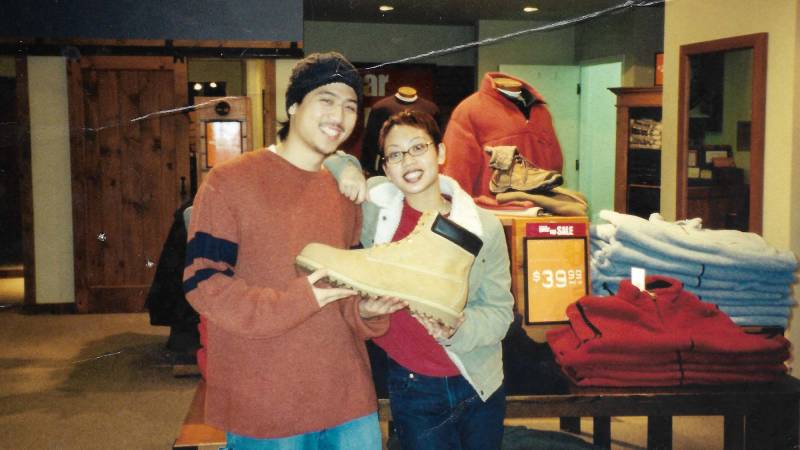Digger Dug
2004 - Film & Video (Film & Video)
Variable dimension
Ben Kinmont
The archive proposes to examine the difference between helping others in the context of an artistic project and in the context of social work in order to question authorship. The first part of Digger Dug made in 2004 was reactivated during the Kadist exhibition, for instance as an exchange with an anthropologist concerning ethics in projects that are both artistic and social. Thus the archive contained a new text and a series of photographs, videos and notes made during the exhibition. Considering the current program of the foundation that links philanthropy and art, Ben Kinmont’s work and particularly the Digger Dug archive appears like a major piece for the collection. This work is simultaneously a theoretical and practical ‘toolbox’ that can evolve with the program of the foundation. The San Francisco Diggers were a community action group of improvisation actors operating between 1966 and 1968 and mostly based in the district of Haight-Ashbury in San Francisco. Their policies were close to community anarchism mixing claims to liberty with community conscience. They were closely associated and shared members with a guerilla theatre group called San Francisco Mime Troupe. The Diggers proposed a free food service at Golden Gate Park in the Haight-Ashbury district at 4pm everyday generally feeding over 200 people with no other food source. They opened a number of free stores in the Haight-Ashbury district in which any item could be taken or given.
Since the late 1980s Ben Kinmont has been interested in interpersonal communication as a means of addressing the problems of contemporary society. His sculptures and actions attempt to establish a direct, personal relationship between the artist and the viewer, using the work as a mediator. If art is supposed to be an agency of intellectual and emotional challenge, then the artist concludes that the audience should also be addressed beyond the institutional frame of the gallery and the museum, and that contact should be more direct. Kinmont’s practice is primarily made up of various projects which occur outside of art institutions. From these projects he makes an archive that contains everything related to the organization and development of a given project including letters, contracts, sketches, photographs, video, watercolors, and sculpture. If an archive is acquired, the purchaser signs a contract which stipulates that he or she must make the archive available to the public and add relevant future material. As such, the collector becomes an archivist as he or she helps to make transparent the project itself. Ben Kinmont was born in 1963 in Burlington, Vermont, USA. He lives and works in San Francisco.
Colors:
Related works sharing similar palette
» see more

© » KADIST
Voluspa Jarpa
2012To make Minimal Secret (2012), Jarpa created sculptures based on pages of declassified CIA information about the United States’ involvement in Chile...

© » NYTIMES LENS
At 90, Photographer Fred Baldwin Still Has ‘So Much Work Left to Do’ - The New York Times Lens | At 90, Photographer Fred Baldwin Still Has ‘So Much Work Left to Do’ https://www.nytimes.com/2019/05/29/lens/fred-baldwin-photography.html Give this article Share Advertisement Continue reading the main story Fred Baldwin reckons he could have become a writer — if the manual Olivetti typewriter he used while studying at Columbia in 1955 had spell-check...

© » KADIST
Thomas Kilpper
2009These two images come from the series called “State of Control” which Kilpper made in the building formerly occupied by the Stasi in Berlin...
Related artist(s) to: Ben Kinmont » Krist Gruijthuijsen, » Hans Ulrich Obrist, » Adrian Piper, » Agnes Varda, » Alexandre Singh, » Anri Sala, » Ben Kinmont Bookseller, » Bernadette Corporation, » Bertrand Lavier, » Chloé Palau
» see more
Related works found in the same semantic group
» see more

© » KQED
A New Flea Market Brings Holiday Spirit to Downtown San Francisco | KQED Skip to Nav Skip to Main Skip to Footer Frisco Foodies The Downtown San Francisco I Loved Was a Holiday Wonderland Rocky Rivera Dec 14 Save Article Save Article Failed to save article Please try again Facebook Share-FB Twitter Share-Twitter Email Share-Email Copy Link Copy Link A young Rocky Rivera (right) poses with her beloved wheat color Timberland boot...





